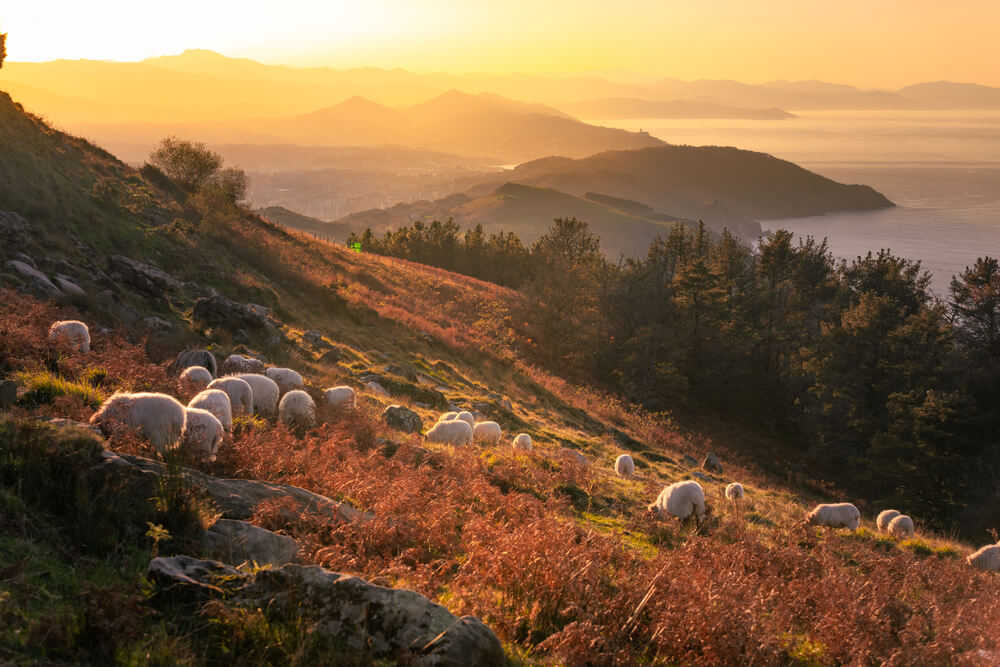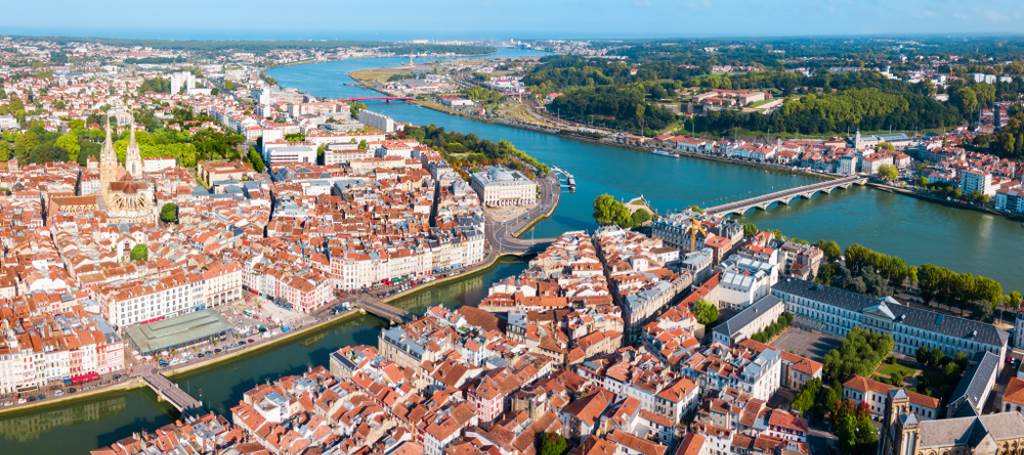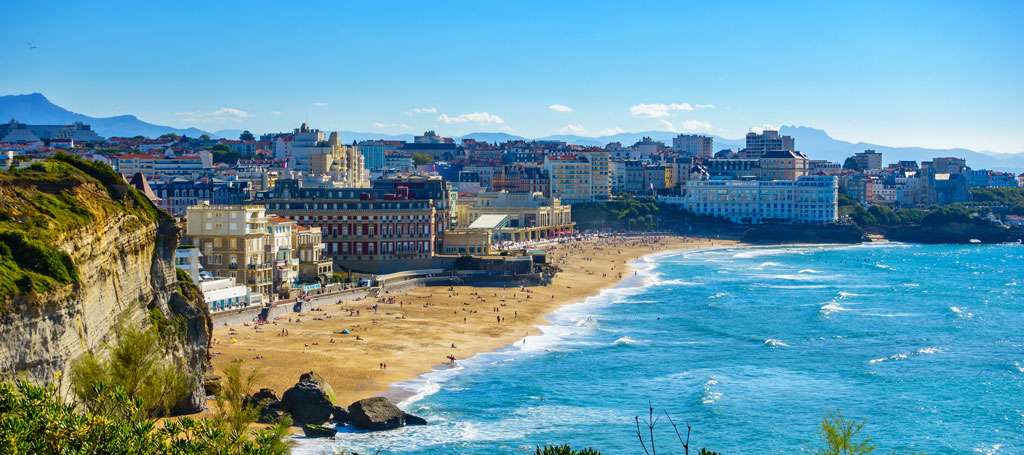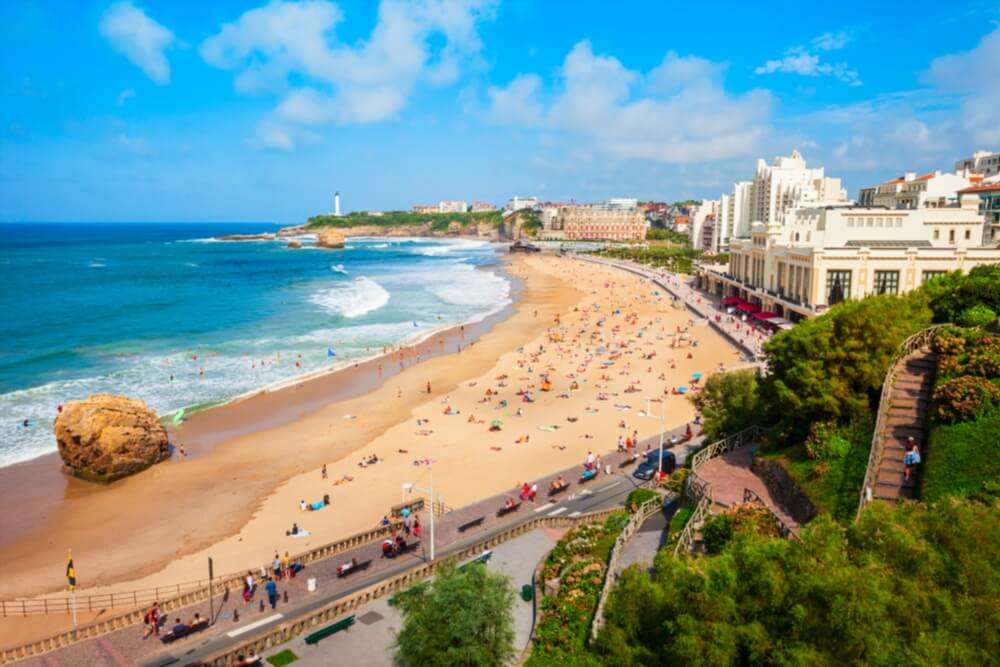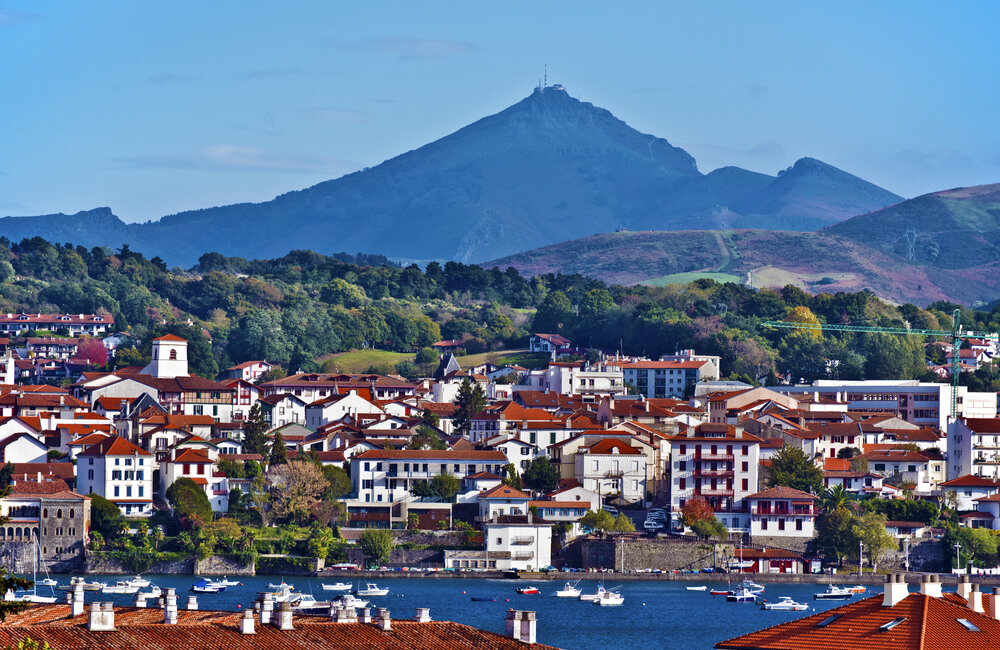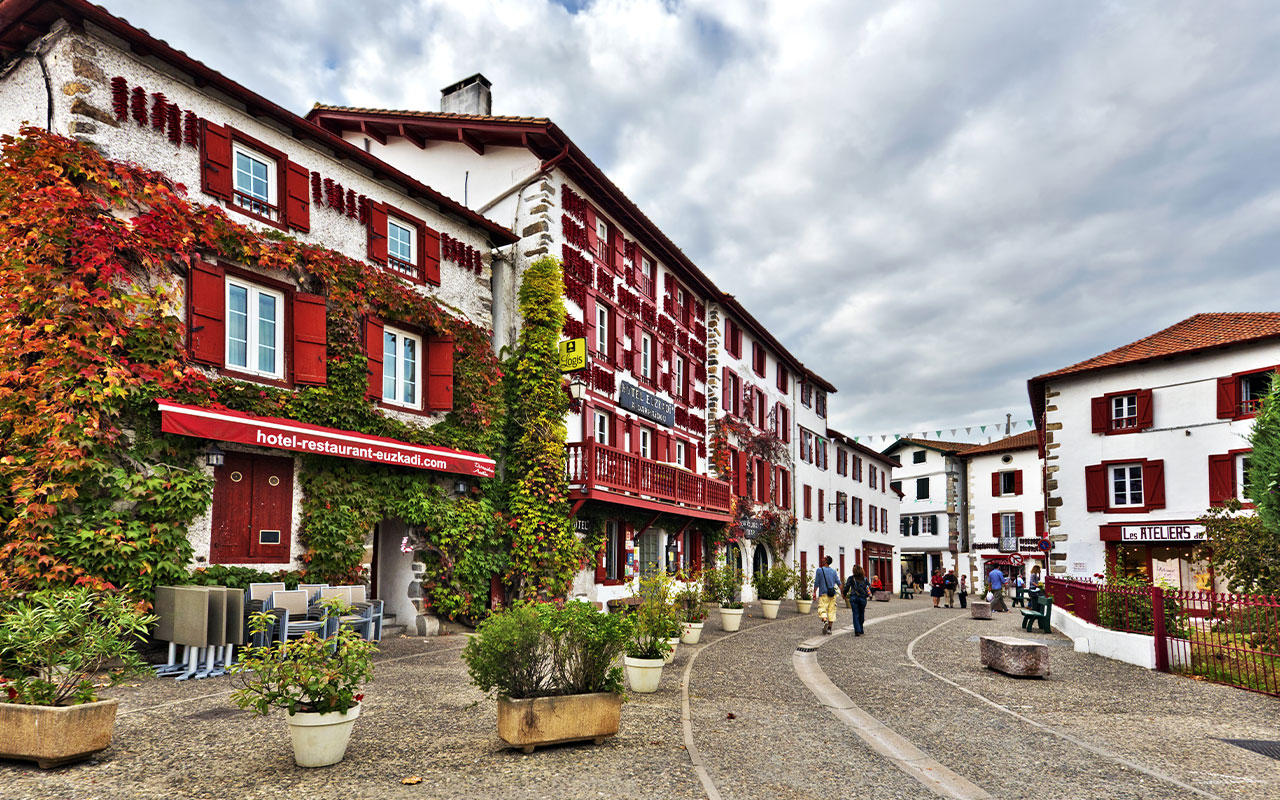What to do in the Basque Country
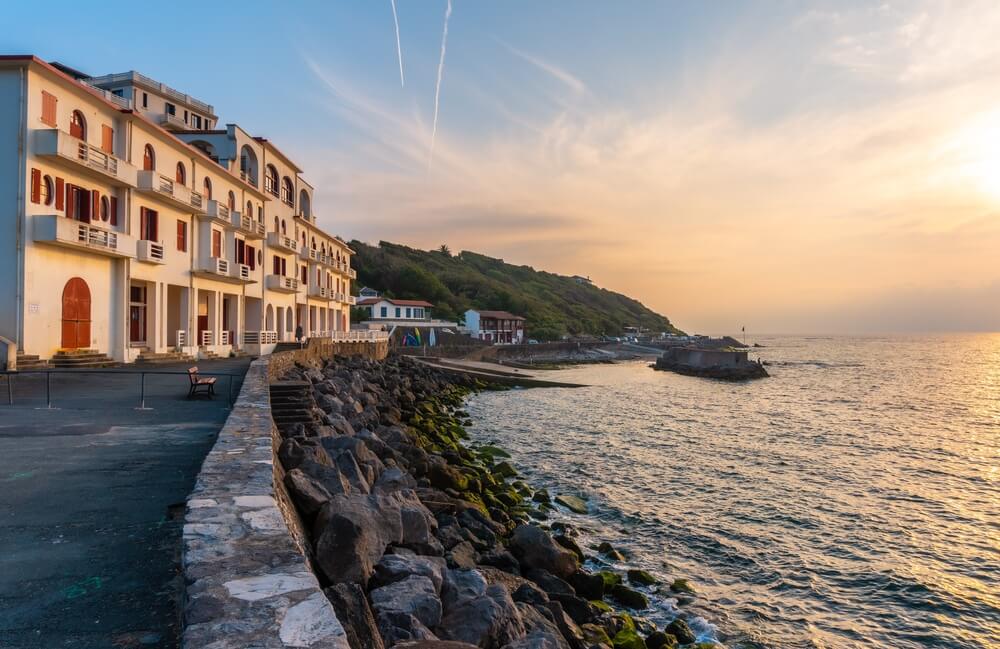
Situated in the far south-west of France, bordered by Spain to the south and the Landes to the north, the Basque country is famous for its capital, Bayonne, the beaches of Biarritz, a haven for surfers, Saint-Jean-de-Luz between mountain and beach, Sare which has been listed as one of the most beautiful villages in France and Saint-Jean-Pied-de-Port, a stopover on the pilgrimage route to Santiago de Compostela…
Travelling to the Basque Country means discovering its deeply-rooted customs, the dialect still widely spoken in the country, its gastronomy and its legends. Lovers of sport and nature will not be outdone, as the very green landscapes are the counterpart of a relatively rainy but mild climate throughout the year.
The Celtic influence has left its mark on Basque culture, and you’ll find menhirs and dolmens just like in Brittany! Between coast and mountains, set off to discover a land of character, but not lacking in generosity.
Whether you’re with family, friends or on your own, our tours will immerse you in this spicy region!
A multi-faceted climate in the Basque Country
In the north of the Basque Country, on the French side, the climate is rather temperate and mild thanks to the Golf Stream and the Pyrenean barrier, with an average annual temperature of around 13°C. Winters are mild, as are autumn and spring, although the latter tends to be rainy. Summer temperatures are not scorching.
In the south of the Basque Country, the vast region of Navarre combines several types of climate: a wet and cool climate from north to west, with a fair amount of rain, and a desert-like climate in the south.
So it’s great to visit the north of the Basque Country in summer and during the first 15 days of September, and the south of Navarre in June and September (and even October in the best years).
History of the Basque Country
The Isturitz caves contain some very fine cave paintings dating back to 35,000 BC, after which the Celtic people left their mark on the region, both in terms of language and the materials they used: lined menhirs and dolmens bear witness to the importance of this culture in the mountains of Navarre, south of Guipuscoa and Vizcaya.
When the Romans arrived, they built a road, took over the Basque ports, introduced vines and mined ore. The “Vascons”, the largest ethnic group among the Basques, took refuge in the mountains on their arrival and only came down after the fall of the Roman Empire to found an independent and egalitarian society.
The invasion of the Goths brought with it Christianity, which gave rise to the region’s traditional patron saint festivals.
In the Middle Ages, the Basques were alternately French and Spanish, before finally becoming French. From the 19th century onwards, nationalism developed alongside tourism. Numerous conflicts and extremist actions by armed pro-independence groups, combined with unfulfilled promises by French President F. Mitterrand and the Spanish government, meant that appeasement was not achieved until the late 90s.
Sports and leisure in the Basque Country
The Basque Country offers a wide range of activities, some of which you’ll only find in the Basque Country:
Typical Basque activities
- Basque pelota games,
- Cesta Punta, derived from jeu de paume, the ancestor of tennis,
- Barehand, a game of pelota without instruments,
- Chistera, pelota played with a wicker glove,
- Basque games of strength (tug-of-war, straw-bale lifting, pit-sawing, etc.),
- Corrida,
- Golf,
- Rugby!
Other activities in the Basque Country
Like everywhere else, you can do :
- Hiking, for example along the Corniche Basque or in the mountains.
- Sea activities: surfing, parasailing, fishing, sea walks.
- But also mountain biking, climbing, rafting and other white-water sports.
What to do in the Basque Country
From Bayonne to Saint-Jean-de-Luz, you’ll be spoilt for choice.
1 – Visit Bayonne
This city of Art and History is a great place to visit, with a well-preserved old town centre where half-timbered houses, Gothic art and art deco rub shoulders. The historic heart of Bayonne boasts a number of listed sites, including the Gothic cathedral of Sainte-Marie, listed as a UNESCO World Heritage Site as part of the pilgrimage route to Santiago de Compostela.
Don’t miss: the paintings in the chapel and its superb stained-glass windows, and the cloister housing some remarkable tombs.
- The Basque Museum and the History of Bayonne,
- The Bonnat-Helleu museum (fine arts museum),
- L’atelier du Chocolat, with an exhibition of old machines and a view of the chocolate-making and assembly premises. Chocolate tasting and sales on site,
- The Aubard Ham and Charcuterie Museum,
- The 19th-century Bayonne Arena,
- The French beret, a must-see. Discover the different stages in the making of a beret in the only production facility in the Basque Country, where ancestral know-how and modern technology go hand in hand.
- The Museum of Natural History
- The Bayonne Festivals in July…
2 – Visit Saint-Jean-de-Luz
Saint-Jean-de-Luz is notable for its 17th and 18th century shipowners’ residences, which bear witness to the town’s wealth. Also worth seeing: the church of Saint-Jean-Baptiste and the church of Saint-Vincent.
- Vauban’s lighthouses and military fort grace the coastline magnificently.
- The town is also renowned for its seaside tourism.
- The Maison Louis XIV bears witness to the life of the rich shipowning families of Luz in the 17th century.
- Its fishing port.
- Its craft shops.
- Take a break to sample the macaroons, mouchous (a type of marcaron), kanougas (melting caramels) and Basque cherry pie, all local specialities.
3 – Visit Biarritz
Biarritz has a lot to offer. A seaside resort since the Empress Eugénie, wife of Napoleon III, fell in love with what was then a wilderness, many tourists flock here every year to discover the pearl of the Basque Country.
Once a village of whale-hunting fishermen, the imperial couple’s move to their summer residence made it the place to be for high society and royalty. A number of sites are directly linked to the imperial couple:
- Sainte Eugénie church, with its magnificent stained glass windows, crypt and Imperial Chapel
- The Hôtel du Palais (formerly the Villa Eugénie, the imperial couple’s holiday home)
- The Imperial Chapel
- The Rocher de la Vierge, patron saint of fishermen, was built by order of the Emperor as a port of refuge. Access is via a footbridge built by Gustave Eiffel.
- The “Imperial Festivities”, with balls, fireworks, excursions to the countryside and the sea, were designed to welcome diplomatic guests in the best possible way.
- The Ocean City: 3D animations that take you to the heart of the ocean, a dynamic 4D cinema, surf simulators, virtual reality masks that let you either climb aboard a Seaborg or dive into the ocean while staying dry… You’ll learn a lot about the ocean in a fun way, an attraction for young and old alike.
- Biarritz is the historic surfing capital of Europe and one of the best surfing spots in the world.
- Seaside facilities, promenades, villas and palaces…
6 beaches along 4 km of coastline
- La Plage du Miramar: less touristy than Grande Plage, it is quieter and full of charm.
- La Grande Plage: the most famous beach opposite the Casino, with a magnificent view of the lighthouse and the Hôtel du Palais.
- Le Port-Vieux: a small cove loved by families and children alike
- La Côte des Basques: a beach popular with surfers for its idyllic setting and views
- La Plage de Marbella: a beach that has retained its wild character
- La Milady Beach: with its landscaped promenade and handiplage point, this beach is accessible to people with reduced mobility.
4 – Visiting Anglet
Anglet boasts 5 km of fine sandy beaches, popular with surfers and the venue for the World Surf League in August. The Côte d’Argent or “love chamber” is a place that attracts many lovers, with its grotto and magnificent view over the Atlantic…
5 – Visit Hendaye
On the border with Spain, this seaside resort is the region’s 3rd-largest yachting harbour, offering a wide range of water sports, particularly in the Baie de Txingudi. Shopaholics will not be left out with the many boutiques in the town.
6 – Visit La Rhune
At an altitude of 905 m, in the heart of the summits of the Pyrénées-Atlantiques, the Rhune massif offers a bird’s eye view of the Basque country and the ocean. Hiking enthusiasts will be delighted, as they will be able to watch the Manech ewes and the little Basque horse, the Pottok, in complete peace and quiet.
To make your tour complete, don’t forget to take a trip on a vintage cogwheel railway from Sare, linking France to Spain. An unforgettable ride that will transport you back to ancient times.
7 – Discover the Isturitz and Oxocelhaya caves
A 1-hour guided tour of prehistory and geology: engravings, plaques and clay constructions from the Palaeolithic period.
8 – Visit the Arnaga villa
This house, built at the request of Edmond Rostand, is a replica of the old Basque farmhouses with their white and red facades. It was here that the characters in Cyrano de Bergerac and Jules Massenet were born. This listed historic monument opens onto a magnificent 15-hectare garden. Also worth a visit is the theatrical fresco by Jean Veber.
9 – Visit Itxassou
This village is famous for its cherries, and the July event attracts thousands of tourists every year, as does its very special setting between plains and mountains, giving it an almost supernatural appearance.
10 – Visit Espelette
Anyone who loves chilli pepper is bound to know Espelette chilli pepper! Many local specialities are based on this emblematic ingredient of the region. You’ll love strolling through the streets of Espelette, past the typical red and white houses, narrow streets and balconies full of flowers.
11 – Discover the Holzarte footbridge
If you’re not afraid of heights, crossing this footbridge over the Olhadubi gorges at a height of 180 m won’t be a problem for you! You’ll enjoy an exceptional view of the wild canyon. Then branch off in the direction of the Kakuetta gorge, where the platforms lead you to the cave of the same name, where you can admire enormous stalactites and stalagmites.
Also worth seeing:
- The Basque corniche,
- Urtubie castle…
- The former whaling port of Guéthary
Not-to-be-missed festivals and events in the Basque Country
Whether religious, cultural or culinary, there are many events throughout the year in the Basque Country:
- The Fêtes de Saint-Vincent in Ciboure and Hendaye at the end of January
- The Cider Festival in Bayonne in March or May.
- La Fête de la Mer in Guethary on the last Sunday in May
- The Cherry Festival in Itxassou in June
- Les Fêtes de la Madeleine in Saint-Palais from 23 to 27 July
- The famous Fêtes de Bayonne on the first Wednesday in August
- The Festival de Force Basque in Saint-Palais at the end of August
- The Fêtes Patronales in Urrugne at the beginning of September
- The Fêtes Patronales in Sare in mid-September
- Guadalupe Festival in Hondarribia in September
- The Chilli Festival in Espelette on the last Sunday in October
- Basque Cake Festival on 1 October
- Fêtes de la Saint-Martin in Biarritz in November
- The Pottock Fair in Helette at the end of November.
- The San Fermines festival in Pamplona in July
- Semana Grande in San Sebastian in August
- The San Martial festival in Irun at the end of June
- The Virgen Blanca festivities in Vitoria Gasteiz in August
- Tolosa Carnival in March
- Olentzero, in the major towns of the southern Basque Country in the run-up to Christmas, the iconic local Father Christmas
- The grape harvest festivities in Alava in mid-September
- The San Sebastian drum parade on 20 January
- The banderas de la concha in early September in San Sebastian.
200 audioguided tours for cities all around the world
Download